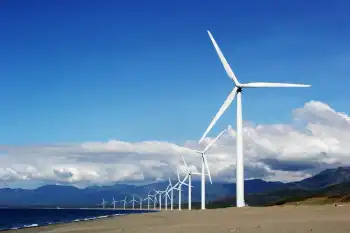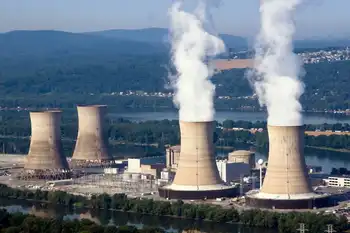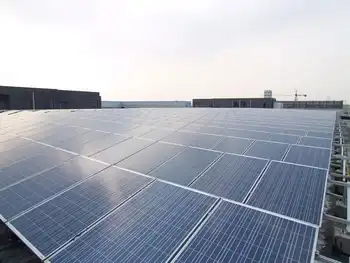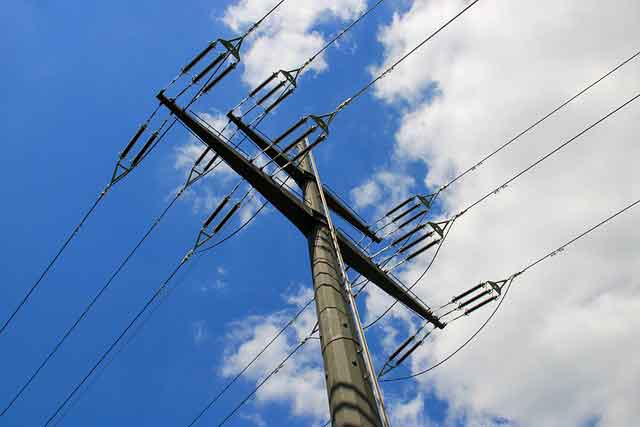New York fund would make energy-saving home loans
By Associated Press
Substation Relay Protection Training
Our customized live online or in‑person group training can be delivered to your staff at your location.

- Live Online
- 12 hours Instructor-led
- Group Training Available
The innovative bill awaiting action by Gov. David Paterson would create a revolving loan fund that allows consumers to pay off the project costs over time through their residential and business utility bills, benefiting at the same time from savings from the energy efficiencies. Contractors would be paid from the loan fund, which the Legislature wants to prime with $112 million of state proceeds from selling carbon emission permits to businesses that pollute.
It won't start this winter. Passed recently by the Senate 50-8, the bill gives the New York State Energy Research and Development Authority six months to start the program.
"Gov. Paterson is working to position New York state as the global leader in the clean energy economy through the dual goals of renewable energy and energy efficiency. The Green Jobs bill aligns with these goals," spokesman Morgan Hook said. Paterson will make a final decision on signing the bill, touted also as a job generator, from stakeholders on both sides, he said.
Opponents see a downside, saying $1.5 billion is already available in state and federal programs to weatherize homes and upgrade appliances, mainly for low-income New Yorkers.
Also, the carbon auction receipts were previously earmarked for other purposes, with $29 million for renewable energy projects, $49 million for a greenhouse gas performance program and $15 million for new carbon sequestration technologies, though that plan is currently subject to a lawsuit.
"The projects that were committed to through the NYSERDA plan would certainly do more to reduce greenhouses gases and capture carbon emissions than various weatherization projects, which already get a ton of money," said Gavin Donohue, president of the Independent Power Producers of New York.
Drew Mangione, spokesman for Sen. Darrel Aubertine, a Watertown Democrat and bill sponsor, countered that the new revolving fund would probably need $40 million to $60 million as seed money and would be maintained through loan repayments. "It's for middle class and businesses," he said, unlike existing programs.
Homeowners, landlords and authorized tenants could borrow up to $13,000 to contract for insulation, storm windows, weather stripping and more efficient furnaces, water heaters and appliances. Small businesses and not-for-profits could borrow up to $26,000 for nonresidential buildings, with NYSERDA setting amounts for multifamily buildings.
Loans would be repaid through "innovative financing mechanisms" with oil and natural gas providers, the bill said. If it works as touted, customers' bills would decline even as loans are repaid.
"On-bill financing would be one way we could work with utilities to finance these projects," NYSERDA spokesman Tom Lynch said. Program specifics, including contractors, financing mechanisms and loan rates, have yet to be determined.
Sen. Tom Morahan, a Republican sponsor who represents parts of Orange and Rockland counties, wrote that the typical New York resident pays $3,000 and $4,000 per year to heat energy-inefficient homes. The loans would eliminate the upfront cost of retrofit construction, a major obstacle for many people, which could cut bills 30 percent to 40 percent and get repaid in about eight years, he said.
On the Senate floor, Sen. Kevin Parker, D-Brooklyn, related the bill to polar bears drowning as ice floes melt from global warming. "This is about our carbon footprint," he said.
The Assembly passed the bill 147-0 in June. Speaker Sheldon Silver said aging and inefficient building stock is a leading contributor of high New York utility costs and climate change.
Senate Republican leader Dean Skelos voted against it, noting the measure takes money from state programs for renewable energy, while hundreds of millions of dollars in weatherization funds are set aside for inner-city apartments under NYSERDA and Division of Housing and Community Renewal programs. Skelos said if anything, money should go back to utility ratepayers who've been hit with higher taxes.
Under the revolving-fund loans, certified contractors would be authorized to enroll applicants, train workers and make energy-saving retrofits. Backers estimate that 5,000 to 15,000 new jobs would be created.
Local 32BJ of the Service Employees International Union called the new measure a step in the right direction, but said officials need to ensure new jobs "pay livable wages." Spokesman Eugenio Villasante said the union represents 70,000 building workers in New York, many in buildings the legislation seeks to retrofit.











